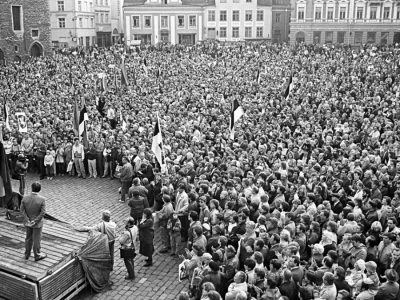Link to Brian’s post here.
Category: 5th Weekly Edition
Shocking Workers of the USSR
by •
Link to Sophia’s post here.
Collectivization or ‘Dekulakization’?
by •

One of the salient features of revolutionary movements is the need to appeal to natural conservatism in the rural working … More![]()
Was it a Year of Great Change Though?
by •
In 1929, the First Five-Year Plan was in its second year and was continuing to centralize the state. This was an important element with changes occurring within this year due to the improvements of productivity of labor, industrial construction, and agricultural development. While these changes were taking the economy by storm, economists “were faced with… Continue reading Was it a Year of Great Change Though? →![]()
The “Shocking” Workers of the USSR
by •
“Do you want to fight against the cold? Do you want to defeat hunger? Do you want to eat? Do you want to drink? Hurry and join the shock group of model labor!” Image Source The First-Five-Year Plan brought about many social, economic and cultural changes and it called for higher production rates among the …
1929: Make a ‘Great turn’ away from religion and into the factories
by •
I’m Going Over to the Six-Day Work Week (1929) Heavenly Powers: Guards! They have a knife! Save me! Source: Bezbozhnik u stanka. Moscow: M.K.R.K.P.. 1923. The Soviet disdain for religion had been well known in society when the crackdown began in 1929, but its efforts stretched back to even before the founding of the USSR. …
Continue reading “1929: Make a ‘Great turn’ away from religion and into the factories”
Sporty Chic(k)
by •
The featured image is a 1929 painting by Ivan Kulikov that highlights the importance of sport in Russia during the late 1920s. The “Great Turn” was a major departure from the New Economic Police (NEP), a movement many thought was… Continue Reading →![]()
Stalinism and Religion
by •
One of the most fascinating components of the ‘building of Stalinism’ is action taken against religion, especially the Russian Orthodox Church. Although the First-Five-Year Plan particularity focused on collective agriculture and industrialization, the attack on religion was physically and mentally schematized. Churches were not only destroyed by the thousands, but propaganda also declared religion poisonous. … Continue reading Stalinism and Religion![]()
Silence has Fallen
by •
Before 1929, the churches of Russia were already facing harsh penalties under the new government. Afraid of the churches power, the Bolsheviks blamed the churches for the famine. The Criminal Code of 1923 placed harsh restrictions and penalties on the … Continue reading →
Collectivization, You Know You Want it
by •
Despite the increased production of grain to be sold in the market, the far greater increase in demand for grain caused the country to fall into a grain crisis. Stalin’s solution for a more long term efficiency of grain extraction, as laid out in his first 5 year plan, was to collect the means of …
